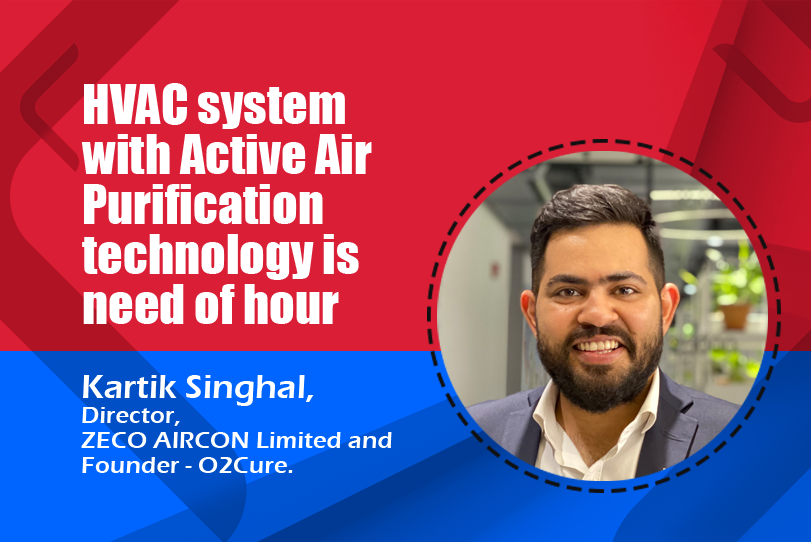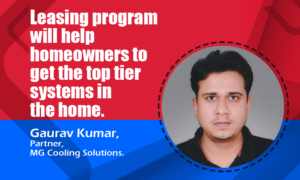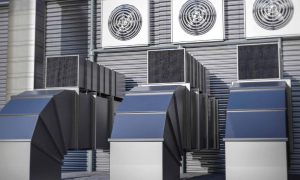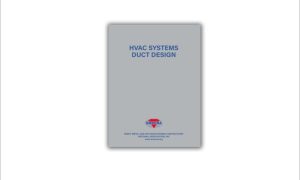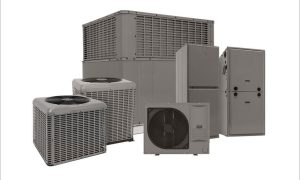Addressing risk before it becomes a fault is a proactive approach to fire and electrical safety measures.
What active safety approaches are available to identify risks to protect the building from fire and gas leakages from HVAC System installed?
Fire and gas leakage from the installed HVAC system can be fatal for the inmates of the building. Some of the more popular preventive safety approaches to protect the building from fire and gas leakages are mentioned herein. Fire and Smoke Dampers in HVAC System: This system protects the exit route, reduces property damages and also saves invaluable lives. Almost 80 percent of the deaths caused by fire can be attributed to the effects of noxious smoke on the human body. Stopping smoke from traveling through the HVAC system is most important for saving lives and minimizing property damage.
The Fire & Smoke dampers are vital elements of a passive fire protection system. A fire damper starts working when the resulting heat from the fire causes the normal temperature to rise above 165°F. Essentially there are 2 types of fire dampers design available: Dynamic fire damper & Static fire damper.
The device is used inside air transfer outlets and air ducts of air distribution system. The device is specifically designed with controls and sensors to automatically close whenever it senses the heat.
A Smoke Damper is a device installed in ducts and the opening of the air distribution system. It can be opened or closed from a remote fire control and command control station when needed to block the passage of smoke and air. The main functionality of this device is to prevent smoke from entering the room due to heating, ventilation or the ducts of the air-conditioner system.
- Prioritizing control of any HVAC equipment that is being used for smoke control to ensure that fire alarm control is at the highest level of priority. The action will override any other control signals that allow the required airflow quantity for exhaust/make-up air, damper closure and opening and unit. shutdown requirement.
- Every element of the HVAC system required for a life safety system or smoke control requires a dedicated wiring connection to the fire alarm system. This can be a parallel path from the HVAC control system if the fire alarm system is used for life safety control of the Building Management System (BMS).
Connectivity is a critical issue, so the alert system of diagnosing and addressing risk before faults become an accident is the key. Are the fire and electrical safety, virus infection safety aspects important from the training point to mitigate the HVAC safety hazards?
Addressing the risk before it becomes a fault is a proactive approach to fire and electrical safety measures.
Basic training for the occupants of the building and comprehensive training for safety personnel is extremely important to mitigate the HVAC safety hazards. Some of the standards training exercises are listed below-
• Fire & Electrical Hazards: On a daily basis, HVAC tasks require handling electrical wiring. While on the job, a technician must switch off or de-energize all the unnecessary equipment before conducting routine inspections, repairing, tests and other service procedures.
Electric accidents can be avoided with some basic tips.
- Switching-off power to the corresponding circuit in the breaker panel.
- Establish standard logout and tag procedures to ensure no one switch on the power while working.
- Before performing the work, test the circuit with a multimeter (properly rated for the circuit) to check if it is still energized.
- Wear PPE (Personal Protective Equipment) to reduce the risk of electrical accidents. PPE examples include hoods, blankets, helmets and gloves. Avoid wearing jewelry or any other conductive materials including clothing made of synthetic fiber. Never forget to wear a face shield or safety glasses while working with electrical circuits.
- Virus Infection Safety: In the wake of the Covid-19, it is imperative to provide a basic level of training for virus infection safety. Some of the standards safety tips are listed herein below.
- Implementing basic infection prevention measures like promoting frequent hand washing (preferably with alcohol-based hand rub containing at least 60 percent alcohol), respiratory etiquettes of covering nose and mouth while coughing or sneezing, use of tissue, maintaining physical distancing, discourage workers from using other’s phone, desk, offices and other equipment.
- Established procedures for quick identification and isolation of sick people.
- Developing, communicating and implementing workplace flexibilities and protection.
- Adopt and implement active purification technologies proven to mitigate virus spread in air, across the premises.
Going through current times, what innovations are suggested about the development process of software for HVAC safety. Do we have enough safety guidelines and equipment to meet the needs of present situations like Pandemic?
There are enough safety guidelines and equipment to meet the needs of present situations. Some of it is mentioned below.
- Maintaining relative humidity level between 40-60 percent.
- While changing the conventional filters, ensure that workers wear appropriate personal protective equipment like N95 respirators, disposable gloves and eye protection (Goggles, safety glasses or face shields) and disposable gloves as all particulates are arrested and alive in the passive filters.
- Exhausts fan in the room should be fully functional, operating at maximum capacity and set to remain on to maintain adequate pressure in the room with adequate fresh air requirements.
- Regular communication and awareness programs are key to safe environment. Workers should be encouraged and trained to report any safety & health concerns.
- In addition to above, up gradation of electronics, automation and system integrations play a vital role in prevention and safety. Artificial intelligence can be used to identify issues and safety hazards.
What specific challenges for HVAC safety have come to the fore as the pandemic impact? What sort of systems may be considered vital from a safety point that HVAC technicians must know now a days?
With the onset of the pandemic, the challenge of supplying fresh and clean air (free of any microbial including SARS-COV-2) became extremely important. Maintaining good indoor air quality is the first step to counter the threat of the Covid-19 pandemic.
Another major challenge faced by HVAC technicians was awareness, knowledge and standards for indoor air quality. Workers should be encouraged and trained to report any safety & health concerns. Workers should be encouraged and trained to report any safety & health concerns.
The traditional passive air purification technique of the HVAC system using a set of mechanical filters has fallen short of expectation. The passive air purification technique uses recirculation of air to clean the indoor spaces of any indoor pollutants.
However, the SARS-COV-2 can linger in the air for days and even stay on the surface without getting killed or neutralized. This increases the chance of infection multifold many times.
From a safety point of view, an HVAC system with Active Air Purification technology is the need of the hour. Active air purification in-duct solutions like PHI-Cell®and REME (patented by RGF Environmental Group) are two of the most innovative technology to neutralize the coronavirus in the air and surface.
PHI-Cell uses a broad-spectrum UV light directed on a quad-metallic catalytic surface with a hydrophilic coating. The reaction produces atmospheric hydrogen peroxide molecules (a natural disinfectant) inside an enclosed space. The hydrogen peroxide molecule gets dispersed neutralizing the virus in the air and rendering it harmless by altering its DNA/RNA structure.
Invented in late 1990’s, the technology is not new to the world and is completely safe for humans as no ozone is produced in the process.
Cookie Consent
We use cookies to personalize your experience. By continuing to visit this website you agree to our Terms & Conditions, Privacy Policy and Cookie Policy.

